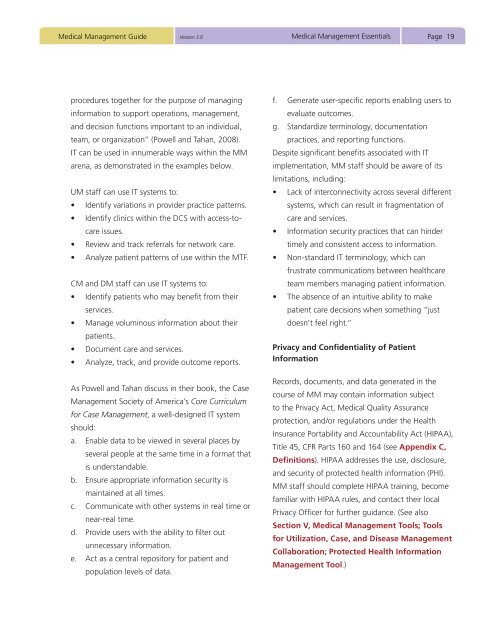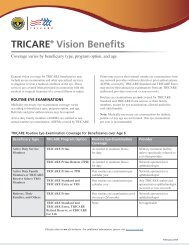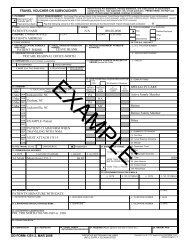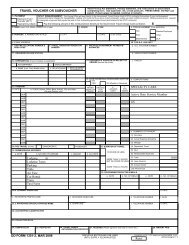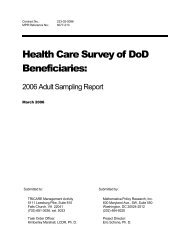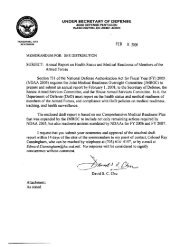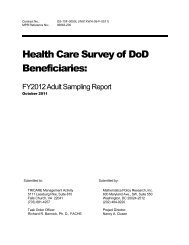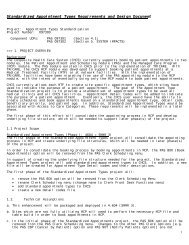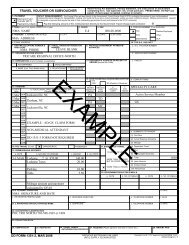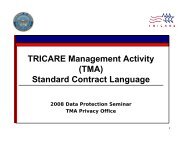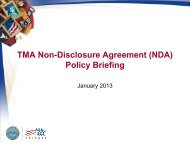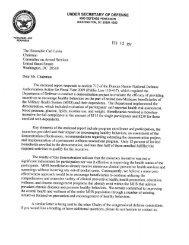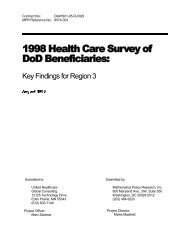Medical Management Guide, 2009, Version 3.0 - Tricare
Medical Management Guide, 2009, Version 3.0 - Tricare
Medical Management Guide, 2009, Version 3.0 - Tricare
- No tags were found...
You also want an ePaper? Increase the reach of your titles
YUMPU automatically turns print PDFs into web optimized ePapers that Google loves.
<strong>Medical</strong> <strong>Management</strong> <strong>Guide</strong> <strong>Version</strong> <strong>3.0</strong><strong>Medical</strong> <strong>Management</strong> EssentialsPage 19procedures together for the purpose of managinginformation to support operations, management,and decision functions important to an individual,team, or organization” (Powell and Tahan, 2008).IT can be used in innumerable ways within the MMarena, as demonstrated in the examples below.UM staff can use IT systems to:• Identify variations in provider practice patterns.• Identify clinics within the DCS with access-tocareissues.• Review and track referrals for network care.• Analyze patient patterns of use within the MTF.CM and DM staff can use IT systems to:• Identify patients who may benefit from theirservices.• Manage voluminous information about theirpatients.• Document care and services.• Analyze, track, and provide outcome reports.As Powell and Tahan discuss in their book, the Case<strong>Management</strong> Society of America’s Core Curriculumfor Case <strong>Management</strong>, a well-designed IT systemshould:a. Enable data to be viewed in several places byseveral people at the same time in a format thatis understandable.b. Ensure appropriate information security ismaintained at all times.c. Communicate with other systems in real time ornear-real time.d. Provide users with the ability to filter outunnecessary information.e. Act as a central repository for patient andpopulation levels of data.f. Generate user-specific reports enabling users toevaluate outcomes.g. Standardize terminology, documentationpractices, and reporting functions.Despite significant benefits associated with ITimplementation, MM staff should be aware of itslimitations, including:• Lack of interconnectivity across several differentsystems, which can result in fragmentation ofcare and services.• Information security practices that can hindertimely and consistent access to information.• Non-standard IT terminology, which canfrustrate communications between healthcareteam members managing patient information.• The absence of an intuitive ability to makepatient care decisions when something “justdoesn’t feel right.”Privacy and Confidentiality of PatientInformationRecords, documents, and data generated in thecourse of MM may contain information subjectto the Privacy Act, <strong>Medical</strong> Quality Assuranceprotection, and/or regulations under the HealthInsurance Portability and Accountability Act (HIPAA),Title 45, CFR Parts 160 and 164 (see Appendix C,Definitions). HIPAA addresses the use, disclosure,and security of protected health information (PHI).MM staff should complete HIPAA training, becomefamiliar with HIPAA rules, and contact their localPrivacy Officer for further guidance. (See alsoSection V, <strong>Medical</strong> <strong>Management</strong> Tools; Toolsfor Utilization, Case, and Disease <strong>Management</strong>Collaboration; Protected Health Information<strong>Management</strong> Tool.)


